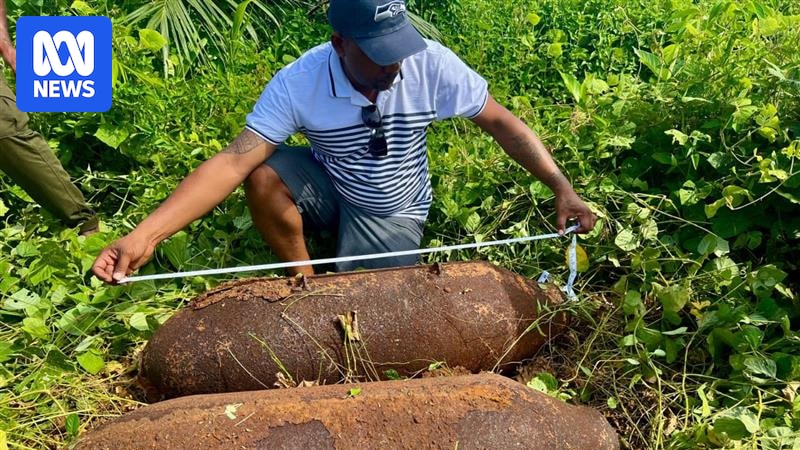
The Second World War had been raging for three years when it first came to Ian Jijiro’s Papua New Guinean village in the form of a crashing plane. In 1942, an American bomber slammed into a swamp near the small Oro Province community, witnessed by Mr. Jijiro’s grandfather. This marked the beginning of Papua New Guinea’s significant role in the Pacific War, a conflict that continues to impact the region even today.
As the war’s memories fade from the collective consciousness, the danger of unexploded ordnance (UXO) left behind grows more acute. Thousands of Papua New Guineans have been killed or injured by these remnants of war. In response, an international non-governmental organization is stepping in to train locals in identifying and safely removing these hidden explosives.
The Legacy of War: A Deadly Reminder
The B-17 bomber that crashed in Mr. Jijiro’s village served as a tangible reminder of World War II for over 60 years. Its removal to the United States left a void in the community’s historical memory. “My grandfather and my father used to tell stories, and we would go and see the plane,” Mr. Jijiro recalled. “With the plane gone, young people don’t know as much.”
This loss of historical knowledge has dangerous implications. Oro Province, a major battleground during the war, is littered with thousands of tonnes of explosives. According to The HALO Trust, a charity dedicated to removing UXO, these munitions have killed or injured an estimated 25,000 people in Papua New Guinea.
“The battles on the Kokoda Track didn’t involve large items, they were mainly small arms, hand grenades, and mortars. But there is no doubt they are dangerous.” — Charlie Lynn, guide and veteran trek leader
New Training Initiative: A Step Towards Safety
The HALO Trust, in collaboration with the Papua New Guinean government and the US Embassy, has announced a new initiative to tackle this issue. A memorandum of understanding was signed last month to launch a program aimed at training locals to safely remove UXO. This $3.38 million initiative, funded by the US, will initially train over 20 Papua New Guineans to survey hazardous areas.
Stephen Talu, The HALO Trust’s PNG program manager, highlighted the widespread contamination, noting areas around Buna and Gona are particularly affected. “We were in Oro in January and came across two 500-pound bombs lying in the middle of a palm oil plantation,” he said. The program will also include explosive ordnance risk education in schools and communities to raise awareness about the dangers.
Learning from the Solomon Islands
The HALO Trust’s experience in the Pacific isn’t limited to Papua New Guinea. In the Solomon Islands, particularly Guadalcanal, the organization has trained locals to recognize and clear UXO. Calvin Sese, a non-technical team leader, noted the challenges as populations grow closer to contaminated areas. “When I was a kid, we saw these items on the surface, but over time items got buried further underground,” he explained.
“They threw it at me like it was just a ball.” — Calvin Sese, recalling a dangerous encounter with a WWII-era grenade
Challenges and Future Prospects
Despite the new initiative, the scale of contamination remains daunting. Oro Province Governor Gary Juffa acknowledged the enormity of the task, noting that the true extent of UXO contamination is still unknown. “It’s always there in the back of our mind,” he said, reflecting on the ongoing threat to communities and the economy, particularly agriculture.
John Rodsted, a researcher at Safeground, emphasized the need for a systematic survey of UXO in the Pacific. He also pointed out the geopolitical interests at play, suggesting that the funding for such projects might be influenced by strategic considerations involving major powers like China, the US, and Australia.
“At the moment there’s squabbling between China, America, and Australia, so the strategic importance of the Pacific has come back into focus.” — John Rodsted, Safeground researcher
As Papua New Guinea moves forward with this training program, the hope is that increased awareness and local expertise will mitigate the risks posed by these deadly remnants of war. Until then, the specter of unexploded ordnance will continue to loom over the communities of Oro Province and beyond.





